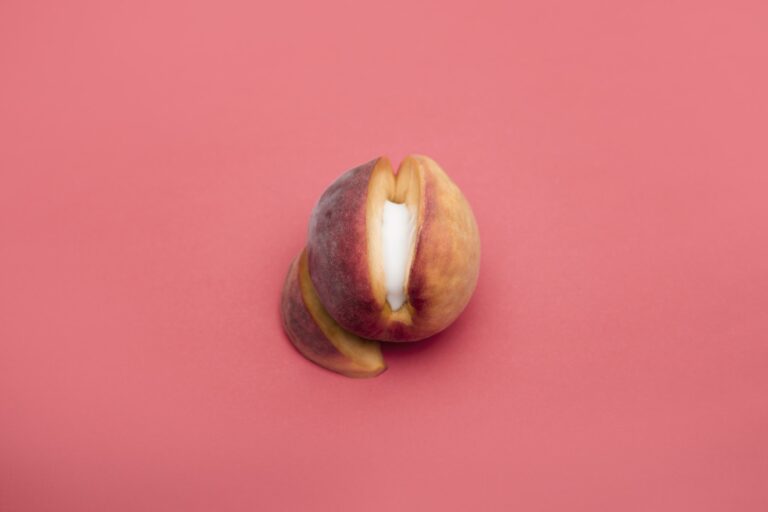Creaming is a natural bodily function that can be a pleasurable experience for both partners. It can be helpful to incorporate it into your foreplay and to create a safe space for sexual exploration.
Creaming is similar to squirting, but it comes from the Skene’s gland and does not always require orgasm. Women can cream during any sexual activity, including masturbation.
What is creaming?
Creaming is the release of female ejaculate during sexual arousal. It is a natural bodily function and should not be stigmatized. It is a great way to enhance pleasure for both partners during sex and can lead to more intense orgasms. However, it is important to communicate with your partner about your sexual desires and to always prioritize safety and consent.
Creaming can also cause a moist vaginal environment that may increase the risk of infection. It is important to practice good hygiene, including washing the hands and genitals before and after sex and using pH-balanced wash, to avoid this. It is also important to use lubrication during sex, as this can help increase fluid production and make sex more comfortable.
It is a common misconception that creaming is the same as urinating, but this is incorrect. Creaming occurs when the Skene’s gland is stimulated during sexual arousal, while urination is caused by the bladder’s contraction. Moreover, creaming is not always associated with orgasm, while squirting often is.
Some women can experience creaming during sex on their own, but others may need to stimulate the area with a finger or a sex toy in order to produce the fluid. Some women can even experience creaming without orgasm. Additionally, performing Kegel exercises can strengthen the pelvic floor muscles and improve bladder control.
It’s a natural bodily function
Women’s bodies can be very complex, and that includes the way they respond to sexual arousal. Creaming, also known as female ejaculation, is a natural bodily function that can be a pleasure for some women. Creaming is a thick, white discharge that occurs in the vagina during penetration. It is the result of a combination of urea, uric acid, and creatinine that are released from the Skene’s gland during sexual arousal. Creaming is similar to urine but it is much thicker and more viscous.
Women who experience creaming often have a strong desire to orgasm during sex, especially when they spend plenty of time on foreplay and intimate relaxation. The clitoris is one of nature’s most fabulous creations, and it has over 8,000 touch-sensitive nerve endings. This makes the climax one of the most pleasurable parts of sex, and creaming can be a key element in taking it from so-so to mind-blowing-fabulousness.
However, it’s important to remember that not all women can cream and that this is not a necessary component of sexual pleasure or satisfaction. It’s also vital to practice safe sex, use condoms when needed, and communicate with your partner about their pleasure preferences and boundaries. Remember that it’s always best to prioritize your own safety and comfort when exploring new sexual experiences.
It can be a pleasurable experience
Creaming during sex can be a highly pleasurable experience for both the woman and her partner. However, it’s important to remember that it is not always associated with orgasm. In fact, it can sometimes be a sign that the woman is not in orgasm at all.
This is because the white creamy discharge is a type of vaginal secretion produced to help with sexual lubrication. It is a natural bodily function that occurs during penetration and can be very pleasurable for both partners.
Creaming can also help to decrease sensitivity and friction during intercourse. This can make it easier to climax and have longer intercourse sessions. The white discharge may also help to reduce the chances of Pelvic Inflammatory Disease (PID), which is an infection that affects the uterus, cervix, and fallopian tubes.
If you and your partner are interested in exploring the pleasure of creaming, it’s a good idea to practice safe sex and communicate about your preferences and boundaries. It’s also a good idea to regularly get tested for sexually transmitted diseases. This way, you can be aware of any infections and seek medical attention if necessary. You and your partner can also experiment with different sex positions, strokes, and other stimuli to see what turns you on.
It’s not always associated with orgasm
While creaming is often associated with orgasm, it’s important to remember that not everyone experiences it. And that’s okay! It’s also important to communicate openly with your partner about your needs and wants when it comes to sexual exploration. This will ensure a safe and enjoyable experience for both of you.
It’s important to note that creaming is not the same as squirting, which is a more intense release of fluid from the Skene’s gland and is tied to orgasm. Creaming, on the other hand, is a less intense form of female ejaculation that can occur without orgasm and may be linked to sexual arousal, but not always.
Another thing to note is that it’s not always possible to know when you are about to have an orgasm, as orgasms can happen at different times and with varying sensations for different people. Orgasms can be triggered by a variety of things, including physical stimulation, certain scents, tastes, textures, colors, and sounds.
Whether or not you’ve experienced creaming before, it’s never too late to give it a try! Just be sure to practice safe sex and use condoms whenever necessary. Also, be sure to check your symptoms using the Sexual Health and Lower Body Symptom Checker before trying any new techniques in bed. This will help you avoid any medical complications that might arise from your explorations.
See Also:



